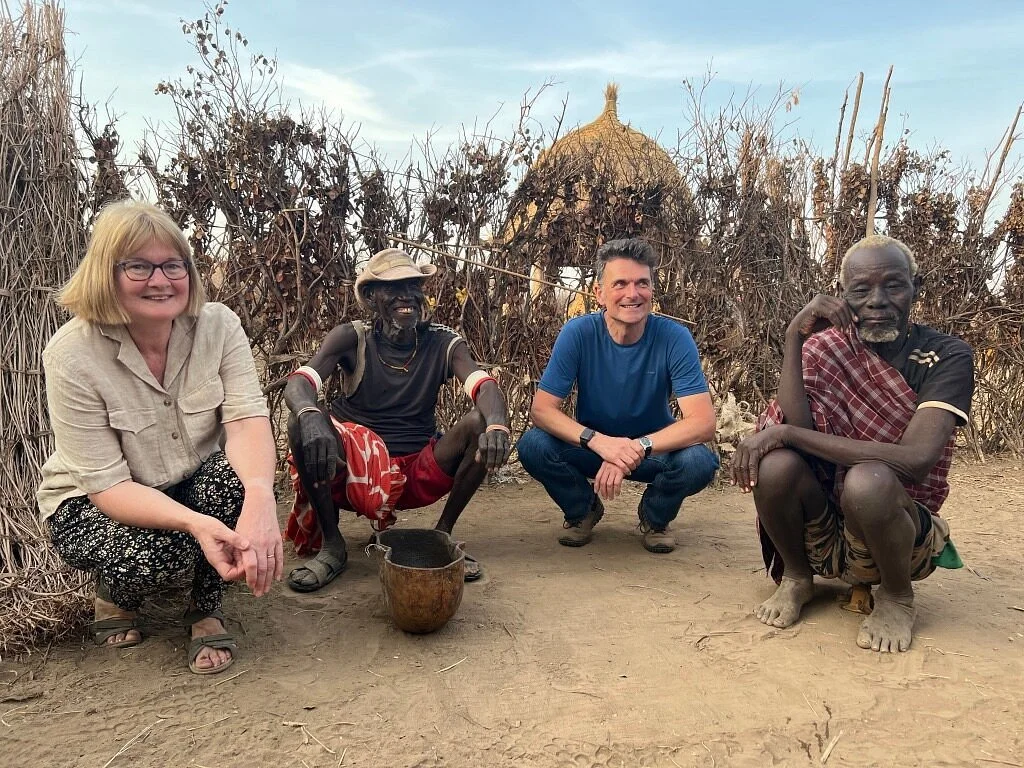DISCOVER TRIBAL LIFE IN THE OMO VALLEY
Deep in southern Ethiopia, past the Rift Valley lakes, lies one of the most culturally rich and visually striking regions on the continent. The Omo Valley is a land where tradition and survival in harsh beauty go hand in hand, and where communities maintain ways of life that have survived for centuries.
Where Culture Meets Nature
The journey into the Omo Valley begins when the terrain shifts: dusty savannahs stretch across low-lying plains, and life is shaped by the seasons, the river, and the land. The Omo River doesn’t just carve through the landscape; it supports many of the valley’s people, who depend on its waters for fishing, farming, and daily rituals.
Here, time seems to live at a different pace. Villages dot the land, built of mud, grass, and wood. Smoke from cooking fires drifts across open skies. The air is dry and raw; the heat is reflected in every colour, every line, every movement.
People and Traditions
Some of the tribes you’ll encounter include:
The Karo — known for their stunning body paint, they decorate themselves in intricate patterns that transform flesh into living art.
The Mursi — famous for their lip plates and imposing presence the Mursi live in mountainous areas and maintain strong traditions of ceremony and social identity.
The Hamer — with their grass-and-mud huts, they are known for their energetic banter and the dramatic “bull-jumping” rites of passage.
Other tribes you might meet are the Kara, Nyamatong, Kuegu, Arbore, Ari, Daasanach, and Turkana, each with its own language, dress, beliefs, and unique way of shaping life around its environment.
Every group has adapted to the valley’s cycles of drought and abundance, to the rhythms of the river, and to the negotiation of tradition with the outside world. Their rituals, festivals, ways of dressing, and even their cosmetics all tell stories of community, identity, and resilience.
Experiencing the Valley
Visiting this region requires more than touring: it’s about connection, respect, and openness. Some highlights of what this kind of journey looks like:
Guided village visits. You can walk between tribes, following paths that snake through the savannah and along the riverbanks.
Cultural ceremonies. When possible, with permission and sensitivity, you might witness traditional ceremonies, such as rites of passage, dances, or gatherings.
Remote stays. Camps or lodges tucked into the land let you settle in ways that most travel doesn’t allow. You stay in places where nightly stars blaze overhead and where voices blend with wind and wildlife.
River journeys. A boat ride along the Omo or exploring riverine forests gives an entirely different perspective: life reflected on water, birds overhead, and landscapes that shift with the seasons.
Why It Matters
Visiting the Omo Valley is not just a visual spectacle; it’s a chance to reflect on how human lives evolve in relationship with nature, culture, and community. The experience pushes back against homogenisation, reminding us that there are many ways to be human. It challenges our assumptions, invites humility, and offers lessons in simplicity, survival, and dignity.
Tips for Travel
Go with local guides who know the tribes. They help bridge cultural gaps and ensure interactions are respectful.
Be prepared for primitive conditions. Remote areas mean fewer conveniences, think early mornings, rugged paths, and basic lodging.
Respect privacy and traditions. Always ask before photographing or attending ceremonies; many customs are sacred or private.
Travel with flexibility. Plans change, river levels, weather, or local events can all affect when and how you travel.
Visiting the tribes of the Omo Valley isn’t a tourist sightseeing trip; it’s a profoundly human experience. It invites reflection and stamina, patience and openness. For those willing to journey slowly, not just through land, but through culture and time, the Valley offers one of East Africa’s richest lessons in belonging and identity.



